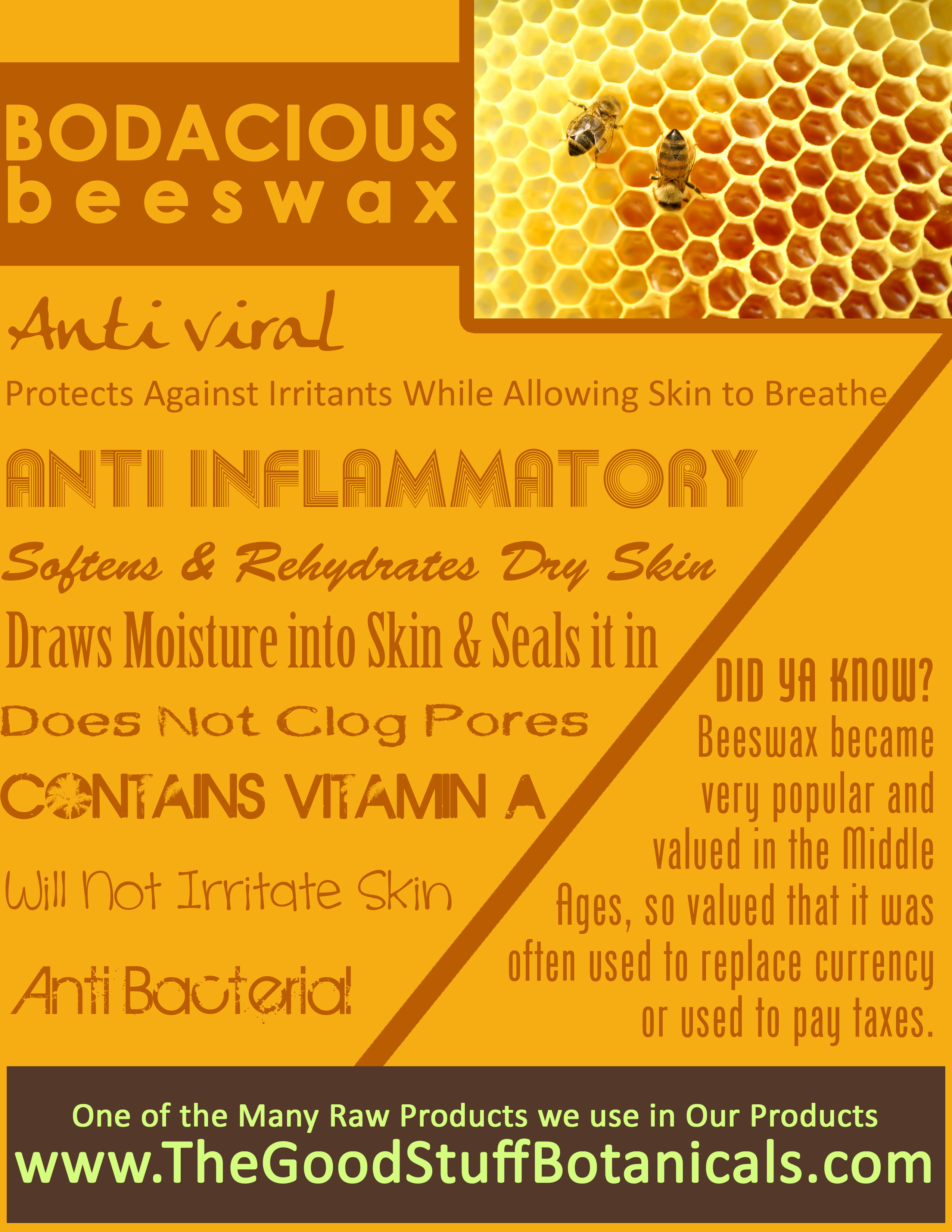Beeswax Benefits For Skin
Carefully crafted by young worker bees into six-sided honeycomb cells, beeswax provides tiny
storage units for honey until the beekeeper extracts the golden liquid. After harvest, the beekeeper
melts and purifies the beeswax, and some of it will find its way into lotions, soaps and other skin
care products. Beeswax may have beneficial effects on the skin, but check with your doctor before
using beeswax to treat any medical condition.
Protectant:
Acting as a surfactant, beeswax, when blended into cold creams and other skin lotions, forms a
protective barrier on the surface of the skin. This barrier, according to Koster Keunan, a global
organic wax supplier, provides a film of protection against irritants while still allowing the skin to
breathe.
This barrier may also aid in protecting the tender skin on your lips. The Mayo Clinic recommends
using a lip balm that contains beeswax during cold weather to reduce your chances of developing
chapped lips.
Skin Healer:
In its natural state, beeswax is firm but pliable. Melted and combined with other ingredients,
beeswax adds body to skin care products, making creams thicker. Like other beehive products,
including honey and royal jelly, beeswax offers anti-inflammatory, antibacterial and antiviral benefits,
according to the magazine, Delicious Living, making it potentially beneficial for treating minor skin
irritations.
Skin Softener:
Dry, rough skin may benefit from creams, lotions or soaps that contain beeswax. When added to skin care products, beeswax acts as an emollient and a humectant, drawing moisture to the skin and sealing it in, reports Botanical.com. Beeswax also contains vitamin A, which may be beneficial in softening and rehydrating dry skin and in cell reconstruction.
Antibacterial:
Beeswax may have mild antibacterial properties, according to a 2005 study conducted at Dubai Specialized Medical Center in the United Arab Emirates. Researchers combined honey, olive oil and beeswax, then applied the mixture to laboratory plates on which the bacteria, Staphylococcus aureus, and the fungus, Candida albicans were growing. The honey/beeswax mixture inhibited the growth of the bacteria and fungus, making beeswax, along with honey, potentially beneficial in the treatment of diaper rash and other bacterial skin conditions.
References:
Koster Keunen: Beeswax through the Ages
Delicious Living: Beauty and the Bees
Mayo Clinic: Chapped Lips: What's the Best Remedy?
Botanical.com: Beeswax Profile
PubMed: Mixture of Honey, Beeswax and Olive Oil Inhibits Growth of Staphylococcus Aureus and Candida Albicans.

